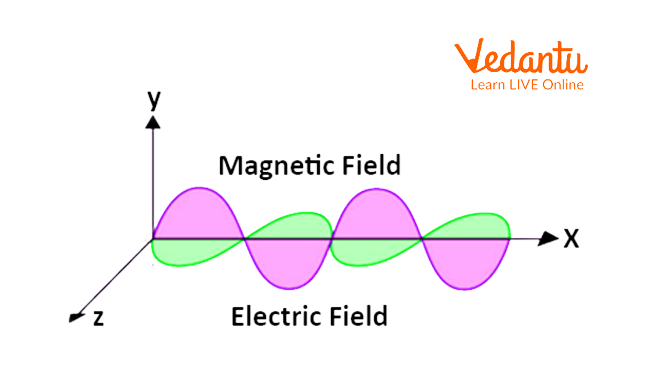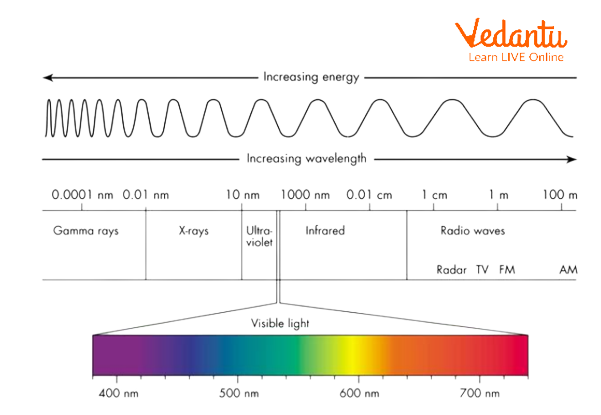




An Introduction to Electromagnetic Waves
Electromagnetic radiation is one of the many ways that energy travels through space. The heat from a burning fire, the light from the sun, the X-rays used by your doctor, as well as the energy used to cook food in a microwave are all forms of electromagnetic radiation. While these forms of energy might seem quite different from one another, they are related in that they all exhibit wavelike properties. Electromagnetic waves have a wide range of use in natural processes such as photosynthesis as well as in man made machines such as X-ray machines. These can be lethal and non-lethal to human beings.
What are Electromagnetic Waves?
Electromagnetic waves are a type of energy that travels through the air, and is made up of both an electric and magnetic field. This type of wave is used to carry information, such as radio signals, and can also be used for heating or cooling objects.
The electric and magnetic fields that make up an electromagnetic wave are perpendicular to each other, and to the direction that the wave is travelling in. The strength of the fields can vary, but they are always in sync with each other.
Electromagnetic waves travel at the speed of light, which is about 300 million metres per second. They do not need a medium to travel through, unlike sound waves, which need air or water to propagate.

Electromagnetic Waves
There are many different types of electromagnetic waves, all with different wavelengths and frequencies. Some examples include radio waves, microwaves, infrared radiation (IR), visible light, ultraviolet (UV) radiation, X-rays and gamma rays.
Basic Properties of Waves
Waves are a type of energy that travels through the air, water, or other mediums. They are caused by vibrating objects and can be heard or seen. Waves have several properties, including wavelength, frequency, amplitude, and speed.
Wavelength: The distance between two successive wave crests (the top of the wave) or troughs (the bottom of the wave). Wavelength is usually measured in metres.
Frequency: The number of waves that pass a given point in a certain amount of time. Frequency is usually measured in Hertz (Hz), which is the number of waves per second.
Amplitude: The height of a wave from its crest to its trough. Amplitude is usually measured in metres.
Speed: It is the rate at which a wave travels through a medium. Speed is usually measured in metres per second (m/s).
The relationship between wavelength and frequency is shown below.
c = ν λ
Here, c is the speed of light, ν is frequency, λ is the wavelength.
The energy required to remove an electron from an atom and energy of an em wave is related as shown below.
hν = hνo + (1/2)mev2
Here, h is Planck's constant, ν is frequency of em wave, νo is threshold frequency, me is the mass of an electron, v is the velocity of an ejected electron.
The hνo term stands for threshold energy (minimum energy required to eject an electron), and the (1/2)mev2 term indicates the kinetic energy of ejected electrons.
Characteristics of Electromagnetic Waves
Electromagnetic waves have several characteristics. Some of the most important ones are mentioned below.
These waves are transverse in nature. They can be propagated by changing the electric and magnetic fields which are kept perpendicular to one another.
Electromagnetic waves are produced with the aid of accelerated charges.
These waves contain constant velocity in a vacuum. This can be almost equal to \[3\times {{10}^{8}}\text{ }m{{s}^{-1}}\].
In order to propagate, these waves do not need any medium to travel.
Uses of Electromagnetic Waves
Electromagnetic waves are a type of energy that can travel through the air, water, vacuum and even through solid objects. They are used in a variety of ways, including:
Radio Waves: Radio waves are used to carry information (such as music and conversations) through the airwaves. They are also used in radar technology, which helps pilots navigate their aircraft.
Microwaves: Microwaves are used to heat food quickly and evenly. They are also used in some types of communications systems.
Infrared Waves: Infrared waves are used in remote control devices (such as TV remote controls) and night vision goggles. They are also used in some types of medical imaging devices.
Visible Light: Visible light is what our eyes can see. It makes up a small portion of the electromagnetic spectrum.
Ultraviolet Rays: Ultraviolet rays can be harmful to living things, but they can also be harnessed for positive uses such as sterilising medical equipment and killing bacteria on food surfaces.

Electromagnetic Spectrum
Properties of Electromagnetic Waves
Electromagnetic waves are a type of energy that travels through the air, or any other medium, like vacuum, at the speed of light. They are made up of electric and magnetic fields that vibrate at right angles to each other.
The basic properties of electromagnetic waves are:
They travel at the speed of light.
They have no mass.
They carry energy.
They can be reflected.
They can be refracted.
Applications of Electromagnetic Waves
Electromagnetic waves can be used in many domains due to their versatile nature. The following are some of the most common ones.
RADAR technology uses electromagnetic waves.
There are multiple ways an electromagnetic wave can be utilised in communication technology, as it helps transmit signals from one source to another.
These radiations are capable of transmitting energy in a vacuum or without using any medium at all.
Ultraviolet rays can simply be utilised to detect banknotes and check if they are forged or not. The banknotes which are original do not turn fluorescent under the UV light.
Due to the ability of infrared radiation to be visible under night vision, it can be used in security cameras.
Summary
Electromagnetic waves are a type of energy that travels through the air. They are made up of an electric and magnetic field, and travel at the speed of light. Waves have several properties, including wavelength, frequency, amplitude, and speed. Some examples include radio waves, microwaves, infrared radiation (IR), visible light, ultraviolet (UV) radiation, X-rays and gamma rays. Electromagnetic waves are a type of energy that can travel through the air, water, and even through solid objects.
They are made up of electric and magnetic fields that vibrate at right angles to each other. The basic properties of electromagnetic waves are: they travel at the speed of light; they have no mass; they carry energy; they can be reflected and they can be refracted.
FAQs on Atomic Structure and Introduction to EM Waves - NEET Important Topic
1. Write the uses of electromagnetic waves in daily life.
The following are a few applications of electromagnetic waves:
Electromagnetic radiations can transmit energy in vacuum or using no medium at all. So, it can be used in space projects where there is no medium.
Electromagnetic waves play an important role in communication technology.
Electromagnetic waves are used in RADARS.
Infrared radiation is used for night vision and is used in security cameras.
2. What two properties distinguish electromagnetic waves from other transverse waves?
Unlike other transverse waves, electromagnetic waves don’t require any medium for their propagation. They consist of mutually orthogonal oscillating electric and magnetic fields, which can pass through empty space. One more point is that the electromagnetic waves travel at the speed of light, which is not possible for other transverse waves that propagate through a material medium.
























